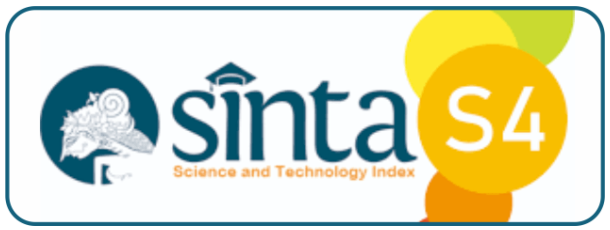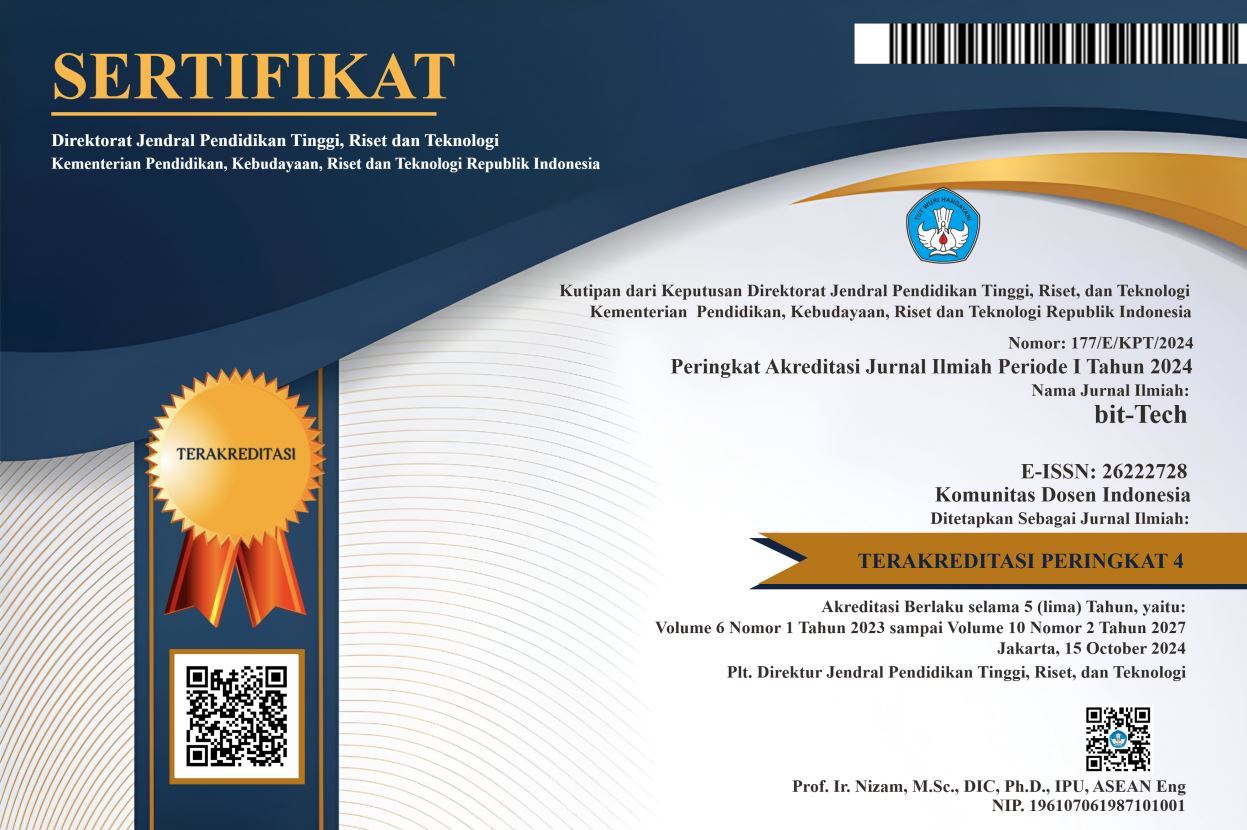The Using Of Information Systems To Calculate Z-Score And To Determination Of Stunting Categories In Toddlers
DOI:
https://doi.org/10.32877/bt.v6i2.1013
Keywords:
Information system, Integrated healthcare center, Stunting, Toddler , Z-Score
Abstract
Information technology is an inseparable part of human work today. It is growing very rapidly along with the human need for the speed at which information is processed until it is displayed to the user. Information systems are now widely used in all sectors, ranging from: economy, agriculture, health and so on. In the health sector, many health facilities have used information systems to improve services, one of which is Posyandu. Posyandu is the front line in providing family health services at the village level. Currently, Posyandu focus is preventing malnutrition or stunting. Standardization of stunt calculation data often changes. In addition, the calculation and documentation of toddler examination data is also still done manually. This has an impact on the efficiency of the performance of staff in determining toddlers who are affected by stunting. Data integration with the Ministry of Health is also a problem when recorded manually. Therefore, it is proposed that an information system that functions to perform Z-Score calculations and classify them into stunting or non-stunting groups. The existence of this information system can also support the government to encourage data integration between local governments and the center regarding stunting data. It is hoped that this information system can help the work efficiency of health cadres to record toddlers who fall into the Stunting category. In addition, it is also possible for the government to access data stored in the system to support data integration.
Downloads
References
I. Purnamasari, F. Widiyati, and M. Sahli, “Analisis Faktor yang Mempengaruhi Kejadian Stunting pada Balita,” J. Penelit. dan Pengabdi. Kpd. Masy. UNSIQ, vol. 3, no. 2, pp. 57–64, 2022.
Ruswati et al., “Risiko Penyebab Kejadian Stunting pada Anak,” J. Pengabdi. Kesehat. Masy. Pengmaskesmas, vol. 1, no. 2, pp. 34–38, 2021.
S. Nurjanah and F. N. Damayanti, “Implementasi Posyandu Balita Sehat Di Masa Pandemi Covid-19,” J. Pengabdi. Masy. Kebidanan, vol. 3, no. 2, p. 33, 2021.
K. Rahmadhita, “Permasalahan Stunting dan Pencegahannya,” J. Ilm. Kesehat. Sandi Husada, vol. 11, no. 1, pp. 225–229, 2020.
D. S. Purnia, R. Ratningsih, M. Surahman, and W. Agustin, “Implementasi Metode Prototyping Pada Rancang Marketplace Rumah Kost Berbasis Mobile,” EVOLUSI J. Sains dan Manaj., vol. 9, no. 1, pp. 1–11, 2021.
P. W. Setyaningsih, S. Okta, and S. Setiyani, “Sistem Informasi Penjualan Kopi Khas Lampung Berbasis Website,” J. INTEK, vol. 4, no. 1, pp. 39–44, 2021.
T. D. Harjanto, A. Vatresia, and R. Faurina, “Analisis Penetapan Skala Prioritas Penanganan Balita Stunting Menggunakan Metode DBScan Clustering,” J. Rekursif, vol. 9, no. 1, pp. 30–42, 2021.
D. F. Permatasari and S. Sumarmi, “Perbedaan Panjang Badan Lahir, Riwayat Penyakit Infeksi dan Perkembangan Balita Stunting dan Non Stunting,” J. Berk. Epidemiol., vol. 6, no. 2, p. 182, 2018.
Menteri Kesehatan Republik Indonesia, Peraturan Menteri Kesehatan Republik Indonesia Nomor 2 Tahun 2020 Tentang Standar Antropometri Anak, vol. 2507, no. February. 2020.
R. Addawiah, O. Hasanah, and H. Deli, “Gambaran Kejadian Stunting Dan Wasting Pada Bayi Dan Balita Di Tenayan Raya Pekanbaru,” J. Nutr. Coll., vol. 9, no. 4, pp. 228–234, 2020.
N. Hafifah and Z. Abidin, “Peran Posyandu dalam Meningkatkan Kualitas Kesehatan Ibu dan Anak di Desa Sukawening, Kabupaten Bogor,” J. Pus. Inov. Masy., vol. 2, no. 5, pp. 893–900, 2020.
E. Susanti, “Peran Posyandu Dalam Pelayanan Kesehatan Masyarakat,” J. Media Kesehat., vol. 10, no. 1, pp. 058–070, 2018.
D. K. Lintang, K. Widatama, and I. Y. Pasa, “Bridging Data Sistem Informasi Rumah Sakit (SIMRS) Rumah Sakit Dan Laboratory Information System (LIS),” J. Sist. Cerdas, vol. 5, no. 2, pp. 92–106, 2022.
P. Yoko, R. Adwiya, and W. Nugraha, “Penerapan Metode Prototype dalam Perancangan Aplikasi SIPINJAM Berbasis Website pada Credit Union Canaga Antutn,” J. Ilm. Merpati (Menara Penelit. Akad. Teknol. Informasi), vol. 7, no. 3, p. 212, 2019.
K. Widatama, M. Hamid Jumasa, and N. Ambadar, “Rancang Bangun Sistem Informasi Akademik Menggunakan Framework Codeigniter pada Universitas Muhammadiyah Purworejo,” vol. 05, no. 02, pp. 107–116, 2022.
P. W. Setyaningsih and I. J. Saputra, “Perancangan Aplikasi Rental Mobil Dengan Framework CodeIgniter,” Infotek J. Inform. dan Teknol., vol. 4, no. 2, pp. 292–300, 2021.
K. Widhiyanti and A. K. P. Atmani, “Penerapan Metode Prototyping Dalam Perancangan Interface Sistem Unggah Portofolio Penerimaan Mahasiswa Baru Diploma ISI Yogyakarta,” Teknika, vol. 10, no. 2, pp. 88–95, 2021.
D. Indra Andhika, M. Muharrom, E. Prayitno, and J. Siregar, “Rancang Bangun Sistem Penerimaan Dokumen pada PT. Reasuransi Indonesia Utama,” J. Inform. dan Teknol. Komput., vol. 3, no. 9, pp. 1689–1699, 2020.
K. Widatama and W. T. Saputro, “Perbandingan Kinerja Algoritma Huffman dan Algoritma Shannon-Fano Dalam Mengkomperesi File Citra,” INTEK J. Inform. Dan …, vol. 2, no. November, 2019
Downloads
Published
How to Cite
Issue
Section
License
Copyright (c) 2023 bit-Tech : Binary Digital - Technology

This work is licensed under a Creative Commons Attribution-ShareAlike 4.0 International License.
I hereby assign and transfer to bit-Tech all exclusive copyright ownership rights to the above work. This includes, but is not limited to, the right to publish, republish, downgrade, distribute, transmit, sell, or use the work and other related materials worldwide, in whole, or in part, in all languages, in electronic, printed, or any other form of media, now known or hereafter developed and reserves the right to permit or license a third party to do any of the above. I understand that this exclusive right will belong to bit-Tech from the date the article is accepted for publication. I also understand that bit-Tech, as the copyright owner, has sole authority to license and permit reproduction of the article. I understand that, except for copyright, any other proprietary rights associated with the work (e.g. patents or other rights to any process or procedure) must be retained by the author. In addition, I understand that bit-Tech permits authors to use their papers in any way permitted by the applied Creative Commons license.


 DOI :
DOI :
 Abstract views: 141
/
Abstract views: 141
/  PDF downloads: 140
PDF downloads: 140











